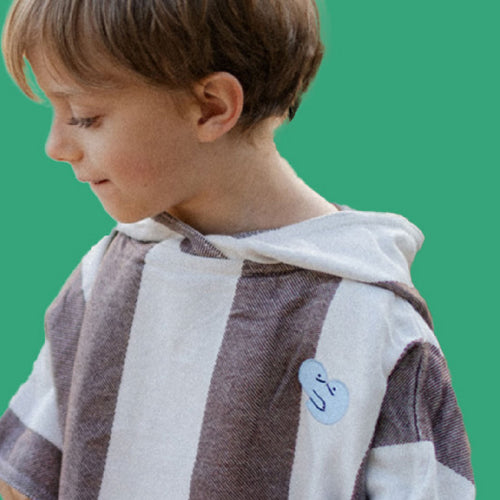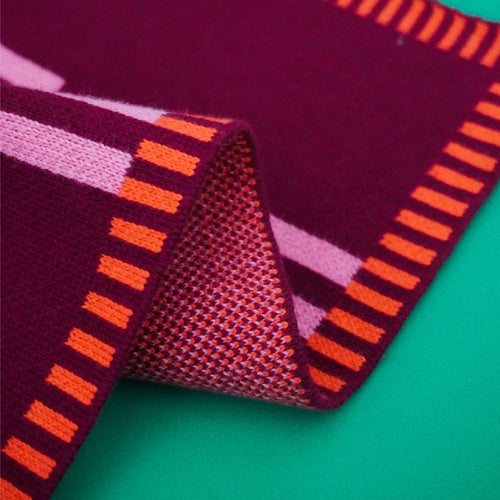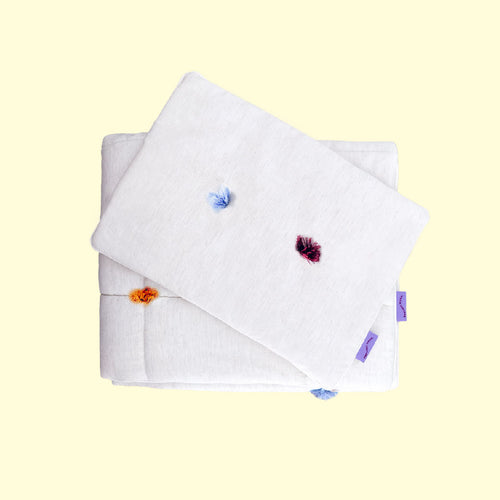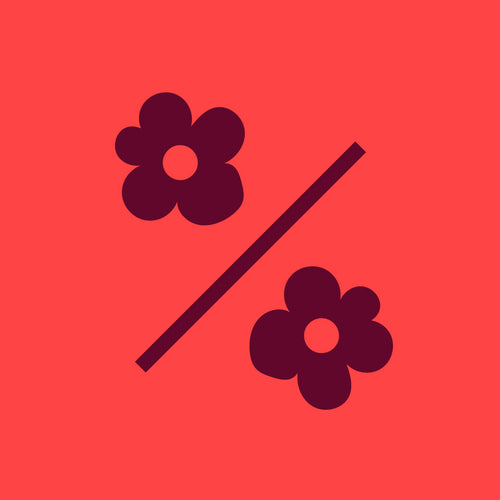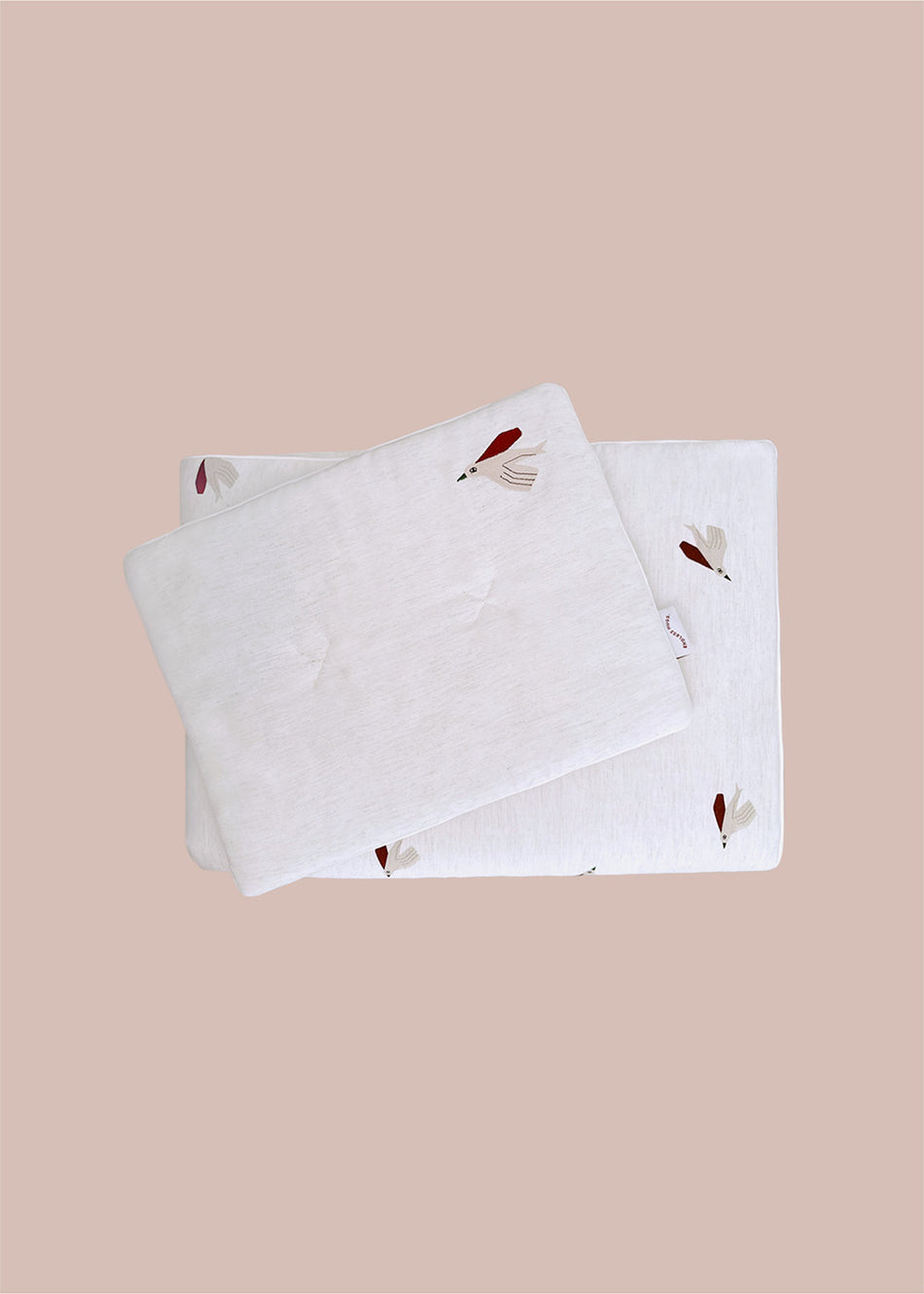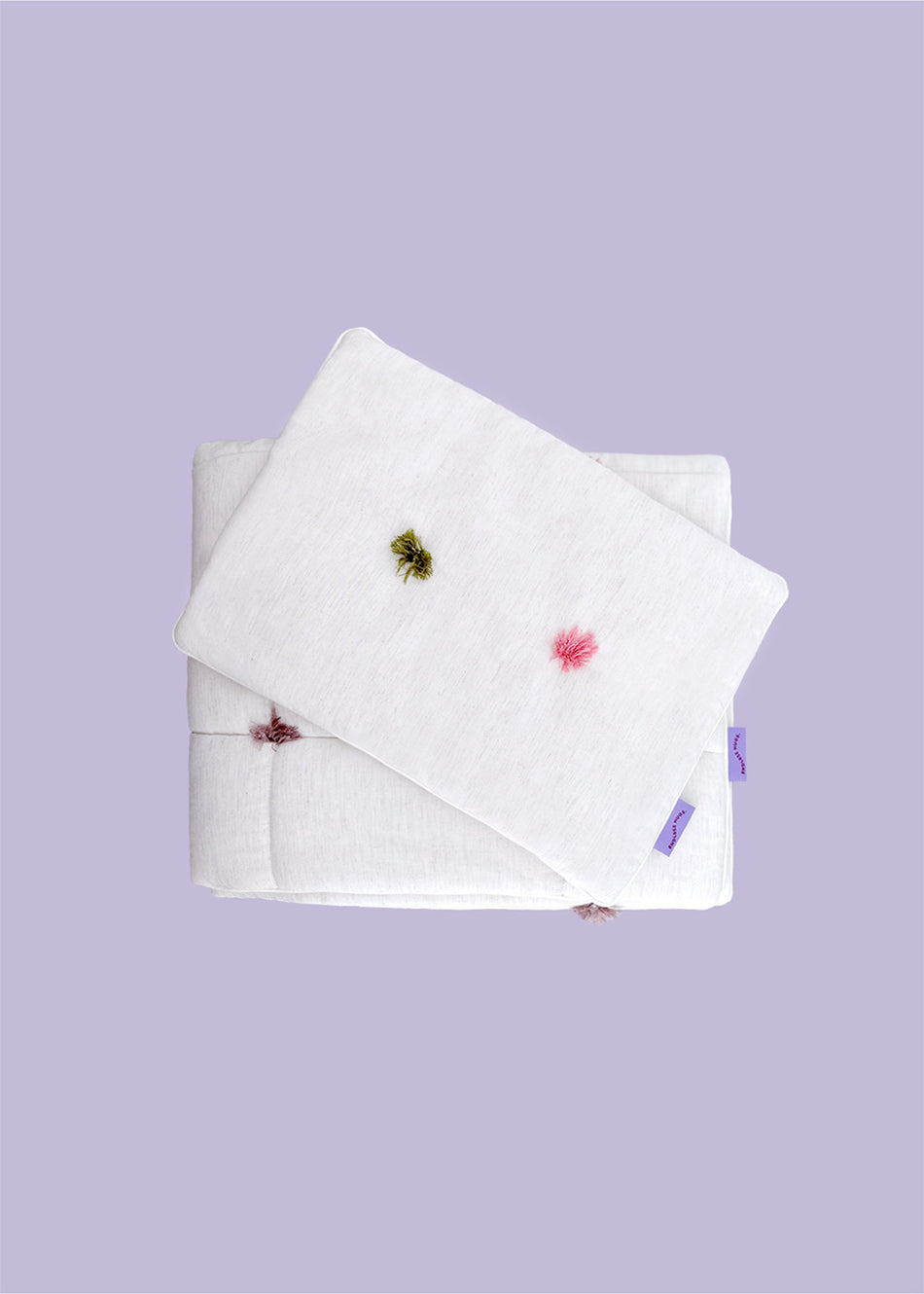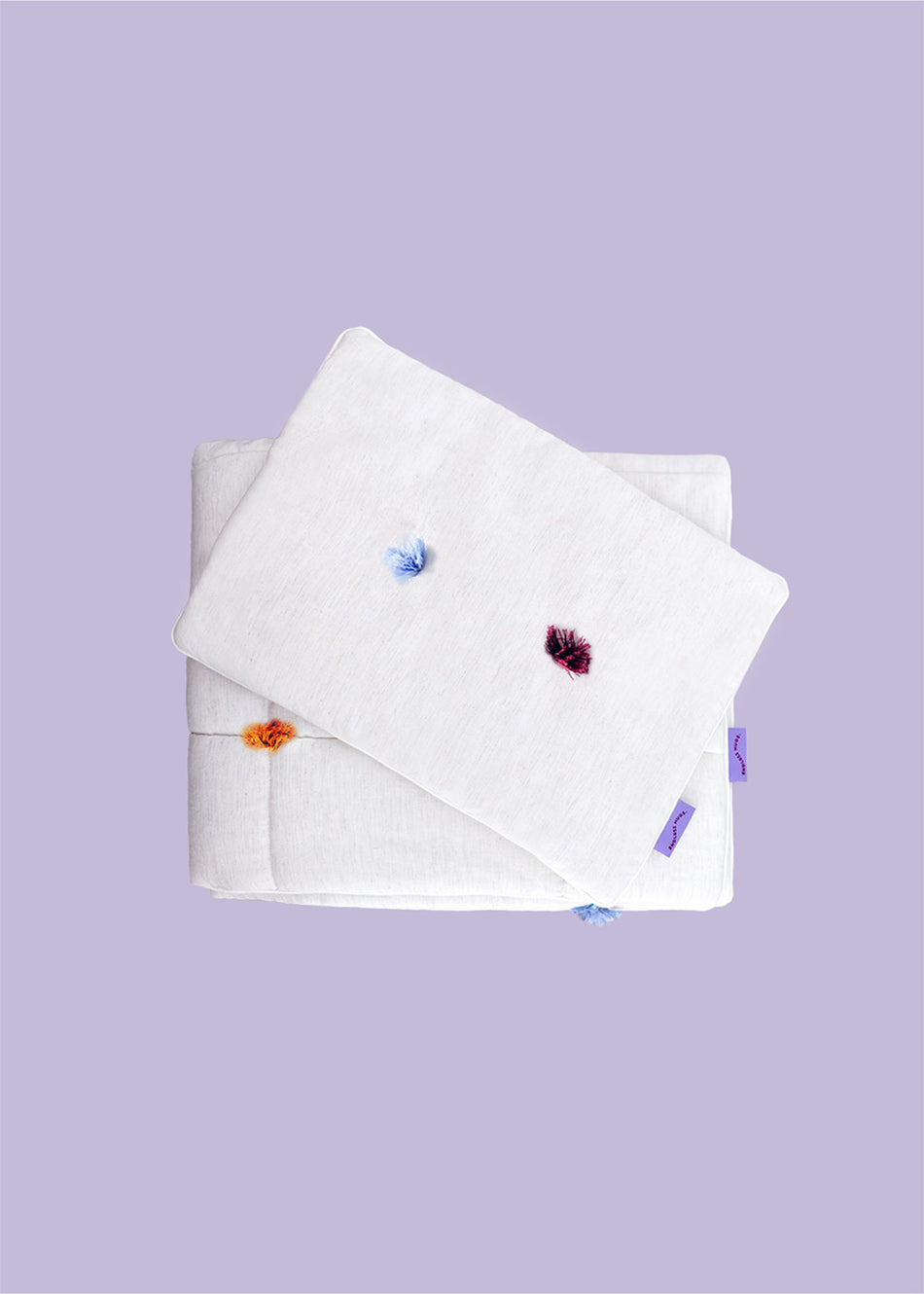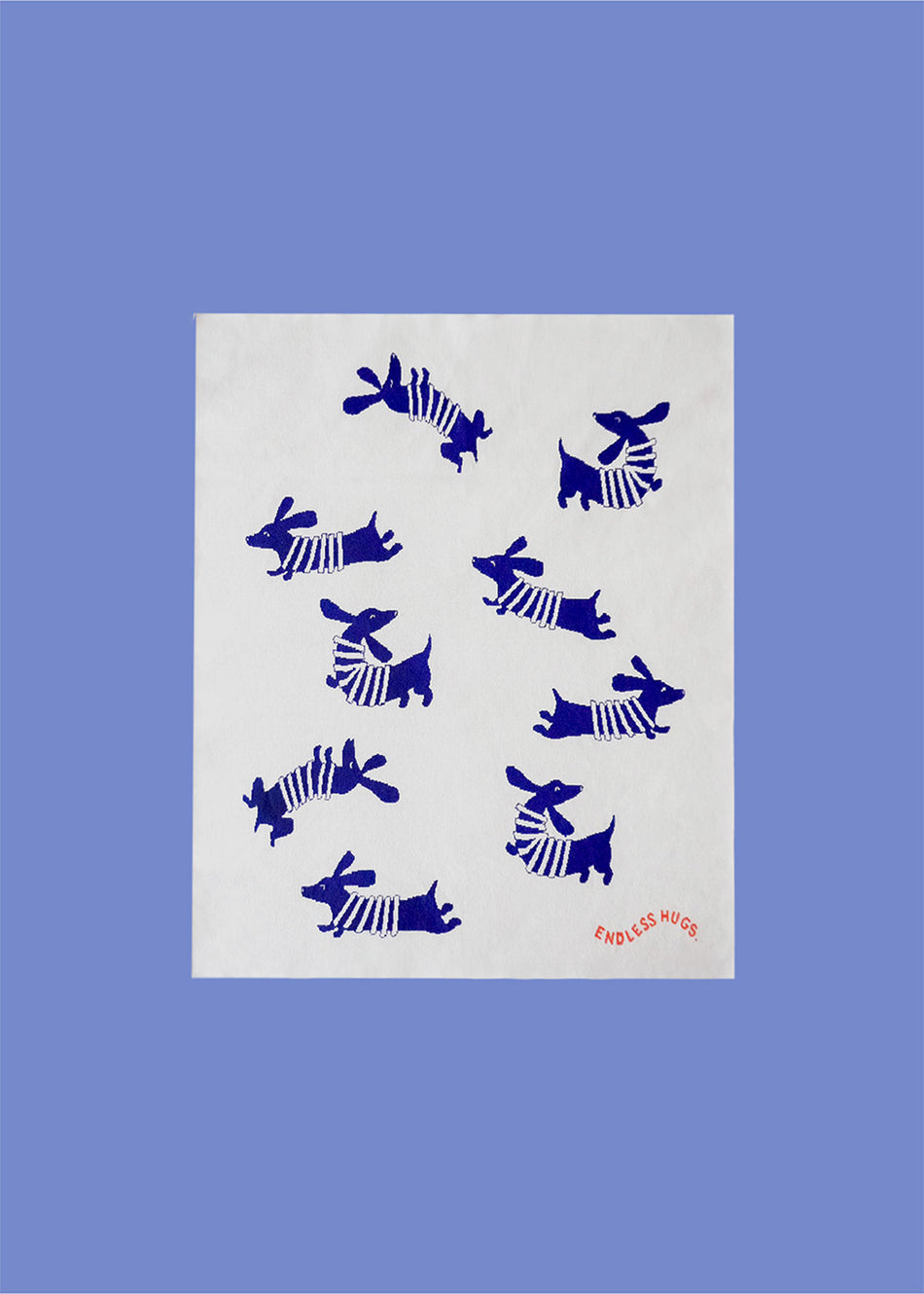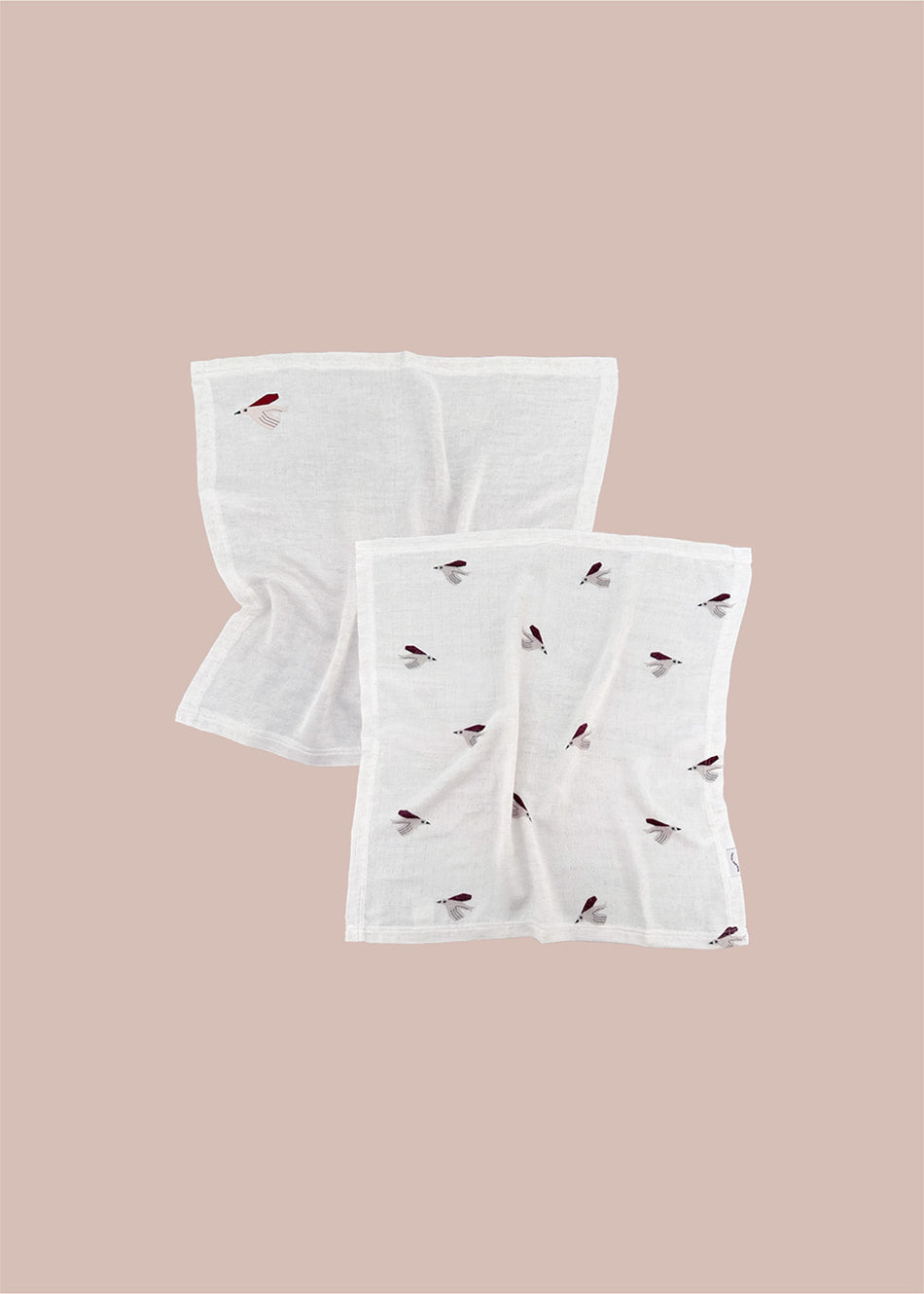Baby duvet
Providing a baby with comfortable and safe sleep is one of every parent's priorities. A properly selected duvet and pillow can significantly impact the quality of your baby's rest. However, choosing these items for a baby's crib isn't as straightforward as it might seem.
Duvets and pillows for babies differ from those designed for adults not only in size but also, and above all, in safety parameters and material type. Babies spend most of their time in their cribs, so the materials they come into contact with should be pleasant to the touch and completely safe for their delicate skin.
Filters
Does a baby need a blanket and pillow?
This is one of the first questions parents ask themselves. Pediatricians agree – in the first few months of life, a baby doesn't need a traditional blanket or pillow. The American Academy of Pediatrics recommends avoiding loose bedding, including traditional blankets and pillows, until a baby is 12 months old due to the risk of suffocation.
In the early stages of a baby's life, swaddles, sleeping bags, or lightweight cotton blankets that can be securely fastened or wrapped around the baby are more suitable. They provide adequate warmth while minimizing the risk of the baby's face being covered during sleep.
Once your baby reaches one year of age, you can gradually introduce a light baby blanket and possibly a very flat pillow, always under adult supervision and in accordance with the pediatrician's recommendations.
What materials should you choose for a baby blanket?
Choosing the right fabric is crucial when purchasing a baby duvet. A natural material like cotton is one of the safest choices. A cotton duvet is soft, breathable, and absorbs moisture well, preventing your baby from overheating while sleeping.
Bamboo materials are also becoming increasingly popular, as they have antibacterial properties and are exceptionally gentle on baby's skin. Bamboo fabric has excellent temperature regulation properties, making it suitable for both warmer and cooler days.
What duvet filling is best for a child?
The filling of a children's duvet should be light, airy, and hypoallergenic. The most common are those filled with silicone nonwoven fabric, which is hypoallergenic and easy to clean. It's also easy to wash, which is extremely important for baby bedding.
An alternative to synthetic fibers is a natural filling, such as organic cotton. These types of duvets for children and babies are completely natural, but they require proper care and can be more difficult to maintain.
Avoid overly heavy fillings, which could impede breathing or cause the baby to overheat. The ideal blanket should be light enough to allow the baby to move freely under it while sleeping.
Baby pillow - is it necessary?
Sleep safety experts agree that a baby doesn't need a pillow in the first year of life. Introducing a pillow too early can increase the risk of sudden infant death syndrome (SIDS) and pose a suffocation risk.
Once your baby reaches 12 months, you can consider introducing a very flat, specially designed baby pillow. Baby pillows differ significantly from those for adults – they are smaller, flatter, and made of appropriate materials.
It's worth remembering that every child is different, and some may not need a pillow at all until they're 2 or 3 years old. It's always best to consult with a pediatrician, who understands the individual needs of each infant.
What size duvet and pillow should I choose for a baby cot?
The standard size for a baby cot in Poland is 120x60 cm or 140x70 cm. A baby's duvet should fit these dimensions – the most common sizes are 90x120 cm or 100x135 cm. A duvet that's too large can be dangerous, as the baby could become entangled in it.
When it comes to a pillow, if you do decide to introduce one, it should be small – typical dimensions for a baby pillow are 40x60 cm or smaller. The pillow's height should not exceed 3-4 cm to ensure proper positioning of the baby's head and spine.
It's always a good idea to check the exact dimensions of the bed before purchasing a duvet and pillow to ensure they will fit perfectly. Also, remember to choose a suitable pillowcase, which should be made of the same high-quality material as the duvet.
Summer or year-round - which duvet should you choose for your child?
The temperature in a baby's room should be around 18-21°C, and the duvet should be adjusted accordingly. Many parents choose to buy two duvets – a light, summery one and a slightly warmer one for the colder months.
A summer blanket for a child should be thin and airy, made of natural materials that wick away moisture well. On hot days, a cotton blanket or a lightweight baby sleeping bag is often sufficient.
A winter blanket should provide adequate warmth without being too heavy. Bamboo materials are perfect year-round because they have thermoregulatory properties—retaining heat in cool weather and releasing it in warm weather.
Baby bedding sets - what should they include?
A baby bedding set usually consists of a duvet, optionally a pillow (for older children), and pillowcases. When choosing a ready-made set, it's worth considering the quality of workmanship, the type of fasteners (preferably secure zippers or tabs), and the ability to wash at high temperatures.
Some sets also include a crib bumper, fitted sheet, or baby sleeping bag. Such an extensive set can be a practical solution, provided all the components are made of high-quality materials.
Remember that duvets and pillows for babies should be washed regularly according to the manufacturer's recommendations. Therefore, it's a good idea to have at least two baby duvet covers to alternate with.
Anti-allergic duvets and pillows - who are they for?
Anti-allergy blankets are recommended for all babies, not just those with diagnosed allergies. Infant skin is extremely delicate and susceptible to irritation, so it's worth choosing hypoallergenic materials from the very beginning.
Anti-allergy duvets and pillows feature special fillings and covers that prevent the accumulation of dust mites and dust. They are also easy to keep clean by washing regularly at high temperatures.
If allergies run in your family, it's even more worthwhile to invest in high-quality anti-allergy bedding. Natural materials like organic cotton or bamboo fabrics are less allergenic than their synthetic counterparts.
How to care for a baby blanket and pillow?
Regularly washing the duvet and pillow is essential for proper baby cot hygiene. Pillowcases should be washed every 1-2 weeks, and the filling itself should be washed according to the manufacturer's recommendations, usually every 2-3 months. Always check the label for detailed washing instructions.
Most baby duvets and pillows are machine washable at 40-60°C, but some materials require special treatment. Cotton duvets typically withstand higher temperatures, effectively eliminating dust mites and bacteria.
It's also a good idea to regularly air out baby bedding and expose it to sunlight, which has natural antibacterial properties. However, avoid leaving the duvet in direct sunlight for long periods, as this can cause the colors to fade.
Sleeping bag or duvet - which is better for a baby?
A baby sleeping bag is a safe alternative to a traditional blanket, especially for babies under 12 months of age. It provides adequate warmth while eliminating the risk of covering a baby's face while sleeping, which is a risk factor for SIDS.
Cotton sleeping bags come in various thicknesses (defined in TOG – thermal units), allowing them to be adapted to the temperature in the child's room. Summer, winter, and universal models are available on the market.
As your baby becomes more mobile, around 12-18 months of age, you can gradually introduce them to a lightweight baby blanket. However, it's worth keeping a sleeping bag as an alternative for colder nights or travel.
Where to buy a safe duvet and pillow for a baby?
It's best to buy children's duvets and pillows from reputable children's stores that offer products with safety certificates. It's worth paying attention to the opinions of other parents and expert recommendations.
In our store, you'll find carefully selected products for children's beds, including duvets made from natural materials that will ensure your little one's restful sleep and comfort. Endless Hugs specializes in the highest quality children's textiles, with a particular emphasis on bamboo and cotton materials, which are safe for even the youngest babies.
Remember that a properly selected duvet and pillow are an investment in a child's healthy sleep, and therefore, in their proper development. It's worth investing time in finding products that are not only safe but also durable and pleasant to use for both the child and parents.
FAQs
When will I receive my order?
We focus on fast shipping, so we send packages within 48 hours on working days. Statistically, however, most orders are sent the next working day.
Can I make a return?
You have the right to return ordered goods within 14 days of receiving the shipment. Morehere.
How do I check the status of my order?
After placing your order, you will receive a confirmation email with shipping information and a tracking number. If you have an account with us, you can check the status of your order in your user account.
Are your products suitable as a gift?
Yes! Each product is carefully packaged, and thanks to the unique design and versatility of our products, it is the perfect gift for a baby shower, baptism or birthday.
Do your products have certificates?
Yes, the materials, yarns and fillings from which our products are made are OEKO-TEX Standard 100 certified. It confirms that our products are free from harmful substances and completely safe for children, including newborns. This certificate is one of the most recognized in the world in the field of testing materials for safety and quality, which guarantees that our products meet the highest standards.
You can read more about the OEKO-TEX® 100 Standard in children's textiles[HERE].
What are your products made of?
Our products are made of high-quality natural bamboo, linen and cotton fibers. These materials are characterized by softness, durability and thermoregulation properties, which are perfect for delicate baby skin.


